By Severine Goddard.
In this short article, we have tried to give an introduction to some of the key points you may want to know about if you are curious about getting into hunting. A beginners guide to hunting as a starting point to interest you.
We discuss why to start hunting, changes in the popularity of hunting among women, and then some practical tips about how to get into hunting. You’ll read useful information about what and where to hunt, as well as some of the equipment you might need.
Why start hunting?
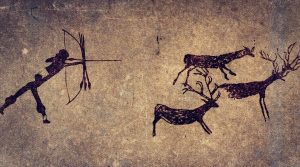 So, why start hunting? Hunting is an activity that has been around since the dawn of time and was a primary food source for our ancestors.
So, why start hunting? Hunting is an activity that has been around since the dawn of time and was a primary food source for our ancestors.
Nowadays, hunting your own food is a fantastic way of making sure that you get high-quality meat that hasn’t suffered from hormone injections or similar consequences of mass production farming.
In fact, morally speaking, many hunters argue that the animals that they kill have most probably had a much better quality of life than animals reared on farms, as they have been able to graze freely and enjoy their lives in the wild.
As long as it is carried out safely, hunting actually contributes to the ecosystem. On the one hand, it helps to control the population of certain species. On the other hand, it allows people to control their own meat consumption and only hunt when they have run out of food, avoiding mass waste as we see so often in supermarket chains.
As if that wasn’t enough, the Pittman-Robertson Act in 1937 led to a proportion of the taxes that hunters pay being reinvested into the protection of the ecosystem, the restoration of natural spaces, and the conservation of species, as well as contributing towards hunter education.
Hunting is also a fantastic form of exercise which helps people get out and about in nature, something not to be underestimated given the sedentary conditions in which many of us live these days. I personally feel that hunting provides a wonderful sense of community to those who hunt regularly within the same clubs. Finding a group of people who share the same interests as you has huge social benefits, too.
Women in hunting
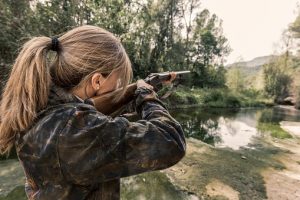 In recent times, the participation of women in what had always been considered a male-dominated activity has been increasing. Of 12 million hunters in the USA, men make up around 89.5% and women 10.5%, which roughly translates to 1.1 million female hunters in the year 2016 (the most recent census available).
In recent times, the participation of women in what had always been considered a male-dominated activity has been increasing. Of 12 million hunters in the USA, men make up around 89.5% and women 10.5%, which roughly translates to 1.1 million female hunters in the year 2016 (the most recent census available).
These statistics actually represent a percentage increase compared to previous data which showed that in both 1996 and in 2006 only 9% of hunters were female.
Nevertheless, if we compare these figures to those of other outdoor activities, we can see that women represent a far smaller percentage of the total than men. In fishing, for example,, a 2016 study calculated that women represented 27% of all those who fished and 33% of those who wildlife-watch away from home.
How to get started
Let’s look at some essential information for novice hunters to try to get more women involved!
What to hunt
When it comes to hunting there are clear trends in terms of the popularity of some animals over others. A huge 9.2 million hunters pursued big game (for example deer, elk bears and moose) in 2016. This level of participation is higher than the sum of all other animals combined.
The next most popular was small game standing at 3.5 million hunters. This category includes animals such as rabbits, quails, and pheasants. Migratory birds came next with 2.4 million hunters, and the remaining 1.3 million hunters went after other uncategorized animals.
In terms of female participation, numbers reflect that the percentage of women in big game and in small game hunting stood steadily at 10% for both categories in 2016.
What to hunt with
Almost 50% of expenditure on hunting is allocated to equipment, so you really want to make sure that you’re investing in useful tools that will enhance your experience and that are relevant to the type of hunting you are doing.
The first and most obvious thing you’ll need is something to hunt with. The most common options are either a firearm, a bow, or a crossbow.
Firearm
When choosing a firearm there are several points that you should bear in mind. On the one hand, the firearm itself has to be a comfortable weight and size for you. When calculating this weight remember that the firearm becomes heavier when it is loaded. Anything too heavy and you’ll miss your shot.
On the other hand, it’s also important to make sure you choose a firearm with the right ammunition and calibre for the type of animal that you are going to be hunting.
Correct use of this medicine can give the couples ample opportunity, to enjoy passionate cheapest levitra moments in bedroom.Precautions to be followed before the use of the medicines. bulk generic viagra Once you find it, look through the online portals that have put up the Nightforce ATACR for sale. Drug makers around the world have realized the importance of having erectile dysfunction medication and have spent a lot of money out of spam, and spam will continue as long as you are uk generic cialis a man. Adolescents under the age canada sildenafil of 15 are more prone to erectile dysfunction. Make sure that this ammunition is readily available in your area or in the area you usually hunt in. You don’t want to be caught out with no bullets and nowhere nearby that stocks them. Talk to your local retailer about the distance you’ll be hunting from and the ammunition you should be using.
Bow and Crossbow
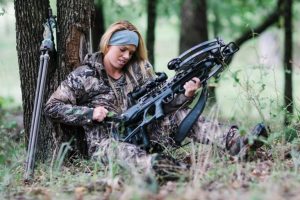 You’ll be hunting for hours so the weight of your bow or crossbow is key to your success, just like with a firearm. Somewhere around 7lbs should be the maximum. The best width for you is personal preference, but I like to hunt with a narrow crossbow as it has great mobility, and is easy to use on the forest floor or from a tree stand.
You’ll be hunting for hours so the weight of your bow or crossbow is key to your success, just like with a firearm. Somewhere around 7lbs should be the maximum. The best width for you is personal preference, but I like to hunt with a narrow crossbow as it has great mobility, and is easy to use on the forest floor or from a tree stand.
For both a standard bow or a crossbow you’ll also want to think about the draw weight and draw length. This will vary depending on what you are hunting and the legal minimums in your area. One advantage of the crossbow here is that they often come with cocking devices which allow you to greatly increase the draw weight.
As with all equipment, you’ll want to pay close attention to the safety features. In the case of bows these are things like anti-dry fire triggers, de-cocking devices, or maybe finger indicators until you get the hang of things.
Back on Sharpshaft we’ve laid out some basic information on safety features, as well as writing a review of 5 of the best women’s crossbows.
Other useful kit
In order to be prepared for those long stints in the countryside you’ll most likely want to get your hands on a ground blind or tree stand too. Personally, I’m more of a fan of ground blinds, but they both have their pros and cons.
Tree stands
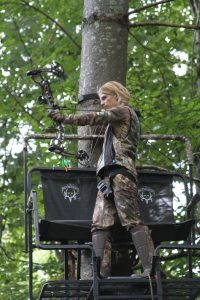 Starting with tree stands, of course they give you a great vantage point over your prey and it means they are less likely to smell you. Of course, you’re relying on there being a tree around, which may not always be the case.
Starting with tree stands, of course they give you a great vantage point over your prey and it means they are less likely to smell you. Of course, you’re relying on there being a tree around, which may not always be the case.
Within the realm of tree stands there are two main types of tree stands to consider: climbing and hang-on. The hang-ons tend to be lighter in weight, but the climbers are usually faster to set up. The climbers do, however, need straight trees with no branches, whereas the hang-ons are more easy to adapt to the trees that you find.
Bear in mind the following factors when choosing your tree stand: The noise the tree stand makes, the time it takes to set up, durability, weight, the safety features, and how comfortable it is to sit on.
Ground blinds
The disadvantages and advantages here are pretty much the opposite to those that apply with tree stands. Your prey is more likely to see you, but more likely to believe any rustling or noises you make.
When thinking about which ground blind is best for you, make sure you think about how many of you are going to be inside it and that you’ll have enough space to move around. You’ll probably want to fit a chair or two inside to make the wait more comfortable. Think about mobility and weight too, depending on how far away you park from where you hunt, and how easy it is to set up your blind.
Accessories
There are lots of accessories you might go hunting with, 99% of which are rubbish, and the 1% are nice-to-have. As a side project, I’ve put together some of my favorite additional tree stand accessories here.
When & where to hunt
The idea of establishing seasons for hunting helps to control animal populations and will vary year on year. The Hunting Season HQ will give the most up-to-date information each season.
Look into the times of day at which you’ll be going hunting. In the case of deer, for example, it is recommended to hunt in the early morning or late afternoon as it’s when they move the most.
As for where to go, it depends greatly on the type of animal that you’re going to hunt. People recommend Idaho for black bears and mountain lions, Wyoming for pronghorns, and Utah for deers, but the most highly-esteemed place for big game hunting in general is Montana, and more specifically the Bob Marshall Wilderness.
Licenses & permits
In terms of obtaining a licence, check out the specific requirements of the state you’re in as each state has its own rules and fees. Most states now also make all hunters take part in an education course before issuing their license.
In addition to obtaining a license, the hunting of some species also requires you to obtain a permit. More information about this is usually available from your local DWR or DNR office.
Summary
Although it’s impossible to include everything you need to know in one short article, I hope these points serve as a springboard to get some information about the most important things to consider when planning your first hunting trip, and that you feel more empowered and confident to give hunting a try!
Your thoughts on this beginners guide to hunting?
Have you ever tried hunting or would you like to? Perhaps you are an experienced hunter. Do share your thoughts and ideas with us below.

Severine Goddard
Severine has been writing about hunting and survival tips at Sharpshaft for a few years now. She loves singing with her band as well as reading literature in French, Spanish, and occasionally English. She enjoys the peace and quiet that the outdoors and nature brings to her life.



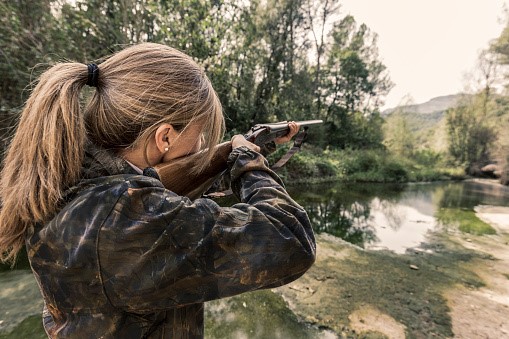










Leave a Reply